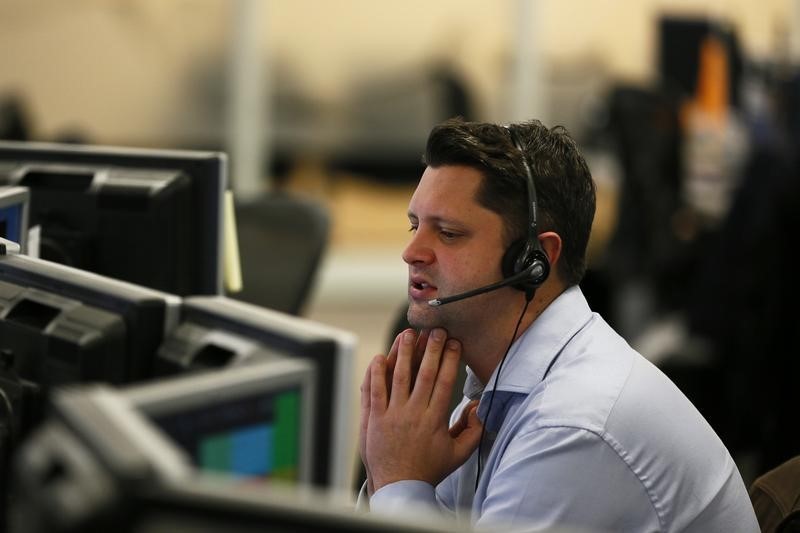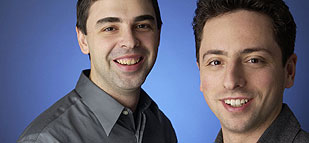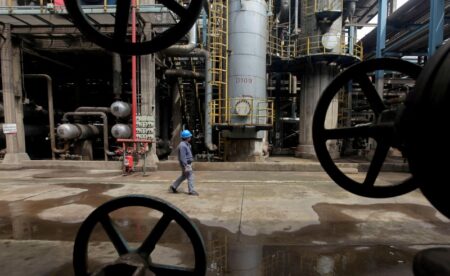Ferrellgas Partners (FGP) reported mixed results in their Third Quarter Fiscal ’24 Earnings Conference Call, with CEO Tamria Zertuche highlighting the company’s strategic initiatives and the resilience of its employees in the face of challenging weather conditions.
While revenues dipped, the company saw a gross profit increase and a significant rise in EBITDA for its Blue Rhino segment. Investments in technology and a strong focus on cost management were key factors in navigating the quarter, even as the company continues to explore restructuring options and refinancing efforts for its debt.
Key Takeaways
- Ferrellgas Partners reported a decrease in revenues by $71.6 million due to unseasonal weather affecting gallon sales.
- Gross profit per gallon increased by 4%, despite the revenue drop.
- Adjusted EBITDA fell by $21.6 million, a 17% decrease from the previous year.
- Blue Rhino’s EBITDA rose by 19%, driven by higher consumer demand and strategic initiatives.
- Operating expenses as a percentage of total revenue went up by 2%.
- The company is actively evaluating refinancing options for its debt and has filed its 10-Q.
- Ferrellgas’s liquidity is approximately $250 million, with a cash balance of $75 million and $180 million available under a $350 million revolver.
- CapEx for Blue Rhino was reduced by $8 million this fiscal year, and 6,600 new accounts were added.
Company Outlook
- Ferrellgas is focused on operating efficiently and reducing costs while still considering restructuring the capital structure.
- The company is investing in safety, training, and customer service technologies to improve performance.
- Acquisitions on the coasts aim to diversify the company’s geographical footprint and mitigate weather-related impacts.
Bearish Highlights
- The company experienced a significant drop in revenue due to a decrease in gallons sold, attributed to warmer weather.
- Adjusted EBITDA saw a notable decline compared to the same quarter in the previous year.
Bullish Highlights
- Gross profit per gallon improved, indicating better margin performance.
- Blue Rhino’s segment performance was strong, with a 19% increase in EBITDA.
- The company has successfully expanded into weather-agnostic areas, which could reduce the impact of adverse weather conditions in the future.
Misses
- Despite overall strategic successes, the company did miss revenue targets due to the decrease in gallons sold.
Q&A Highlights
- Ferrellgas discussed the positive effects of weather events on propane demand, emphasizing the company’s efforts to become more weather agnostic.
- The company spoke on its refinancing evaluations for senior notes, aiming to de-risk financially.
- The redemption of Class B shares was addressed, with specifics contingent on timing and distributions.
Throughout the call, Ferrellgas Partners emphasized its commitment to maintaining sufficient liquidity to meet business needs and to continue its pursuit of strategic initiatives to bolster the company’s position in the market. With a focus on margin performance and a proactive approach to managing the capital structure, Ferrellgas aims to navigate the complexities of the market and weather-related challenges.
Full transcript – Ferrellgas Partners (FGPR) Q3 2024:
Operator: Good day and thank you for standing by. Welcome to the Ferrellgas Partners, Third Quarter Fiscal ‘24 Earnings Conference Call. After the speakers presentation there will be a question-and-answer session. [Operator Instructions] Please be advised that today’s conference is being recorded. I would now like to hand the conference over to your speaker today, Tamria Zertuche. Please go ahead.
Tamria Zertuche: Good morning. My name is Tamria Zertuche, Chief Executive Officer and President of Ferrellgas. I wanted to start by saying how proud I am of our more than 4,000 Ferrellgas employees. Our experienced operations professionals, they planned well, and they executed even better against the weather anomaly we experienced this quarter. They managed expenses in key areas of operations, including driving fleet expenses down by over 8% when compared to prior year. Regarding weather impact, we have taken positive steps over the last four years to create balance in our demand across the different customer segments of our business. Our focus has been on growing our weather agnostic customer base by both customer type and geographic location. We have made great progress in the areas of Tank Exchange, Autogas, and in our industrial commercial segment. However, the extended and unseasonally warm heating season negatively impacted the heating segments of our business. We experienced about 10% warmer temperatures across the dense centrally geographic areas of our business. Additionally, we regretted seeing some long-standing businesses downsize their footprints and even close their doors. The effects of inflation, did make a mark this quarter, but our hard-working account managers, they were able to redeploy some of the assets related to those closed businesses and other areas, allowing for a decrease in overall capital expenditure. Finally, I would like to again call out the hard work of all the employees of Ferrellgas and the strong contributions that they make to this great industry. I will now turn the floor over to our Chief Financial Officer, Mike Cole, to go over our financial results for the quarter.
Mike Cole: Thank you, Tamria, and thank you all for joining us on today’s call. I’d like to remind everyone that some statements made during this call may be considered forward-looking, and that various risks, uncertainties, and other factors could cause actual performance to differ materially from anticipated. These factors are discussed in our Form 10-K, filed on September 29, 2023, and other documents filed from time-to-time with the Securities and Exchange Commission. Additionally, we note that the purpose of this call is to discuss the results of operations for the third fiscal quarter ended April 30, 2024. As Tamria commented, warm weather negatively impacted our financial results as heating-degree days during the third fiscal quarter were 15.7% warmer than normal and 9.8% warmer than the prior year quarter. Record high temperatures across much of the United States drove an 11% decrease in gallons sold. Revenues were $71.6 million lower, which was partially offset by a decrease of $52 million in cost of products as compared to the prior year period. As a result, gross profit decreased 7% for the third fiscal quarter 2024 compared to the prior year period. Margin per gallon for the third fiscal quarter 2024 increased 4% compared to the prior year period. The favorable increase was due to segment mix, our Platinum Plus fixed-cost program for residential customers, national account pricing improvements, and other cost dynamics. Operating income per gallon for the third fiscal quarter of 2024 decreased 10% compared to the prior year period, primarily due to the decrease in gross profit previously noted. We recognize net earnings attributable to Ferrellgas Partners, L.P. of $52.8 million and $72.4 million in the third fiscal quarter of 2024 and 2023 respectively. Operating expense as a percent of total revenue increased 16% for the third fiscal quarter. The $3.2 million or 2% increase in operating expense was primarily due to a $2.6 million increase in personnel expense, which was comprised of a $5.2 million increase in medical claims paid, partially offset by a $2.6 million decrease in incentive accruals. Adjusted EBITDA, a non-GAAP financial measure, decreased by $21.6 million or 17% to $104 million in the third fiscal quarter compared to $125.6 million in the prior year quarter. The change was primarily due to the increase in gross profit noted above and warmer than normal weather. We also made a $99.9 million cash distribution on April 9, 2024 to Class B unit holders of record as of March 25, 2024. This brings our total Class B distributions paid to-date to approximately $250 million. It is important to note that these distributions are discretionary and are made possible by the company’s continued strong performance. Even after given effect to these distributions, the company’s cash balance at the end of the third quarter was $73.6 million. I will now turn the call back to Tamria.
Tamria Zertuche: Thank you, Mike. Focusing again on our counter seasonal Blue Rhino business, the warmer than normal temperatures and strategic initiatives resulted in an increase of 19% during the third fiscal quarter in Blue Rhino’s EBITDA compared to prior year period. Consumer demand surged as the warmer weather prompted an early kick-off to the grilling season. Additionally, Blue Rhino tank exchange increased in areas where the electric grid failed due to the heat. We leveraged our national footprint, supply contracts, and our experienced labor force, executing well against higher than normal demand in our tank exchange business. To-date, Blue Rhino operations professionals have installed over 500 self-service kiosks, which allow consumers to purchase a propane cylinder 24 hours a day, 7 days a week, quickly and conveniently. Home delivery service is also available in 19 markets, with plans to expand. Additionally, Blue Rhino decreased capital expense by nearly $8 million this fiscal year due to supply chain improvements and inventory turns improvements. Now to turn to the technology front, the company continues to invest in opportunities to improve customer service and reduce overall costs through automation and other tools. We’ve made great progress on our logistics projects, which have reduced costs over $1.2 million in fiscal 2024. Tank monitoring and telematics technology ensures our customers have a ready supply of propane in addition to improving the efficiency of our delivery efforts. Also, our new credit processing platform went live a few months ago. This platform offers a seamless payment process for our customers and it is on track for an estimated $1.2 million in annual cost reductions. Now before we move to the live Q&A section of our call, I want to turn the call back to our moderator. But before I do that, as mentioned in the announcement for this call, any additional questions might be submitted via our investor relations email box at investorrelations@ferrellgas.com.
Operator: Thank you. [Operator Instructions]
Tamria Zertuche: All right, good morning. As we’re looking through the questions, we see that there are several related to the June 7th filing of the Eddystone. We are still evaluating that pending case and we will not be addressing questions on that topic today. I think we’re going to start with a question regarding our OpEx and movement up in OpEx as compared to prior year and what are things that we’re doing to mitigate the overall OpEx expense. So first of all, I think you’ve seen in some of our releases that we’re working on, an enterprise-wide ERP system. So, obviously there’s consultants, widespread training across the company that are related to that. Additionally, we have seen higher medical expenses this year which we believe to be one-time in occurrence as compared to prior year. And then when you think about our business, its people and it’s our fleet, and the fleet side of things we implemented telematics technology at the beginning of this year. Actually fast-tracked it as we saw diesel prices sort of staying steady in comparison to prior year and the cost of auto parts. The telematics will greatly reduce those two areas. So those are the expense management mitigating items that we’re currently working on.
Mike Cole: Good morning. This is Mike. So, we have received some questions around our non-maintenance CapEx in a particular – the, you know the investment returns for non-maintenance CapEx. And so when we look at capital spending, there’s essentially three buckets. We will look at maintenance CapEx, growth CapEx, and then M&A CapEx, and so when I refer to non-maintenance CapEx, it’s really growth and M&A CapEx and that is more a function of opportunities and business needs. In terms of the investment returns, I think as everyone knows on the call, there is a hurdle rate that companies will look to in terms of making those type of discretionary investments or we don’t disclose what our hurdle rate is. We think that’s sensitive information, especially as it relates to M&A activities. But those discretionary investments are made when they meet or exceed our internal hurdle rate. The cost of our capital is out there in the market in terms of what our senior notes are trading at and what the class fee units and the preferreds are at. So people, you could calculate what you think our cost of capital is, but what we’ll do on discretionary capital spending is make sure it exceeds our hurdle rate, and then that’s what drives the financial portion of that decision. There is a question that came up about when do we expect to file our 10-Q? When is the deadline for the filing? The 10-Q was filed last evening with the federal holiday. It will be available tomorrow morning. We received an extension, an automatic extension from the SEC with the filing that we made with either last Thursday or last Friday. So the 10-Q has been filed and will be available tomorrow morning. There’s been some questions and we’re looking at the questions, so we’re trying to prioritize them, so apologies for the pause. The extending the revolver and the ‘26 senior notes, two separate issues. As many know, the revolver matures in March of 25. It went current through this past March. We have been in discussions with the banks about extending and amending the revolver. We’ve had generally supportive conversations with the banks. That process or that extension is in process. In terms of the ‘26 senior notes and an early refinancing of the ‘26 senior notes, they are callable currently at 1.344%. March of next year, they’ll be callable at par. We have been evaluating whether or not it makes economic sense to do an early refinancing of the ‘26 senior notes. The indicative pricing that we’ve seen coming out of the high-yield market now is much more attractive compared to where it was six to nine months ago and it’s something that has caught our attention. When we’ve had discussions with some of the fixed-income investors, they’ve been very supportive of our access to the debt capital market. So, we continue to evaluate whether or not that makes sense. Obviously, the ruling this past Friday adds another aspect to that discussion and we’ll continue to evaluate whether or not it makes sense for us to come through the capital markets now for the early refinancing of the ‘26 notes. Some questions on liquidity. We have a couple of different questions on liquidity. So when we talk about liquidity, there’s several – there’s a couple components. One is the cash balance and at the end of the quarter the cash balance was $73 million, $74 million thereabouts. I’m going to round up to $75 million for easy math. We have a $350 million revolver. We do need to maintain per the financing documents $100 million of liquidity. So that puts revolver availability at $250 million, and then we have about $70 million of LC’s outstanding. All of this is obviously public information. And that puts us down to about $180 million of availability under the revolver. Combined with the $75 million of cash, that puts us at roughly $250 million-ish of liquidity.
Tamria Zertuche: Let’s take a question here on sort of the CPG margin performance over prior years and our outlook on that. I think margin performance is directly related to our ability to safely deliver our product to our customers with an experience they like and want to engage with again. So we believe our investments in safety and training, customer service and technology are largely supportive of this continued margin performance. Margin pressures are the same today as they’ve always been. The economic well-being of our customers, demand factors, some related to weather, also fluctuations in the commodity pricing. We have shown great acumen in terms of being able to take advantage of those fluctuations, disruptions and the supply. Those things are opportunities that will always remain in this industry, and if you’ve looked at it over the past ten years, you can see that Ferrellgas has always taken advantage of those and we see those opportunities in the future as well.
Mike Cole: Related to the refinancing of the senior notes, there are a couple of questions coming in around the capital stack and plans that we may have regarding restructuring our capital structure. This seems to be a question we get often when we go to the industry conferences. We are continuing to evaluate whether or not there’s options around the capital structure. I talked earlier about the ‘26 senior notes. There is nothing, obviously, that we could announce today in terms of the restructuring. Right now, we are focusing on operating the business and reducing costs, including reducing our capital costs. We’ll continue to evaluate restructuring options, and when it makes sense for us to take actions, we will do that. But right now, there’s nothing to announce regarding the restructuring of the capital structure.
Tamria Zertuche: We’re jumping around between capital structure and company performance items, but I think that hopefully helps with keeping the questions moving. There are a few questions around Blue Rhino. So I want to call out again the fact that we were able to decrease CapEx expense in regards to Blue Rhino by $8 million this fiscal year, really due to supply chain improvements and the inventory turns. We focused the first three years of this transformation of our company on our retail division. We haven’t been shy about sharing that, and our sights turned to Blue Rhino really over this past year. We’ve added 6,600 accounts. We’ve been able to increase our inventory turns and do these supply chain tweaks at our production facilities to really continue to drive CapEx expense, which then obviously increases our cash flow. That has been a focus. We’ve also installed over 500 self-service kiosks that will create demand. We’re meeting demand then 24 hours a day. So we’re excited about all that’s happening on the Blue Rhino front, excited about the people and what they are doing in that area of the business.
Mike Cole: Another question came in on the refinancing of our bonds and how we think about the refinancing of the bonds. From a conceptual perspective, there is the economic evaluation where you quantify what the call premium is, you quantify what the increase in interest expense would be from going from five and three-eighths or whatever the rate is, seven and three quarters, 8%, whatever rate people want to assume. And you can quantify what that impact is on the dollar amount of interest expense. You can then do kind of a breakeven analysis to figure out, okay, what do the treasuries or credit spreads need to move in order to mitigate that benefit? And we certainly look at it from an economic perspective, but then there’s more of a qualitative aspect to that evaluation, and that’s one of de-risking the company in terms of taking refinancing risks off the table in ’26. And you know, if we were to go out now or sometime in the next few months and do an early refinancing of the ‘26, that would de-risk that 2026 refinancing event. So, we look at it both, from a quantitative and qualitative perspective, and as I mentioned earlier, we continue to evaluate whether or not an early refinancing of the senior notes makes sense. We also received a question on the amount required to retire the Class B shares. That’s a function of additional distributions. It’s a function of the timing of the redemption of the Class B’s. Just to level set with everyone, the Class B’s can be retired. You talk about the retirement of the Class B shares, that really – I’m interpreting that to mean the redemption of the Class B shares. So there is a IRR requirement in the Class B documents. Those are available publicly, I believe, through prior filings back in 2021. You could go in there. You could calculate based on the distributions we made to-date, and you could pick a redemption date and you could calculate what the redemption amount would be. So I can’t give you a specific answer, because it’s dependent on the time period in which those are redeemed. But the distributions that we’ve made certainly reduced that redemption value versus not having made any distributions.
Tamria Zertuche: We’re pausing. We’re rereading some of these questions to make sure that we’ve hit the categories that answer most of what is here.
Mike Cole: A question has come in regarding ways to increase liquidity, to deal with things like the Class B shares as well as any litigation expenses. As Tamria said at the onset of the Q&A, we’re not going to go into detailed comments around the litigation, our response to litigation, or potential responses to the litigation, and the impact that those various responses might have on the company. As I mentioned earlier, our liquidity right now is consistent with prior periods in terms of revolver availability and cash balances. We think we have sufficient liquidity to continue to operate the business, and we will continue to evaluate what our liquidity needs are, given the events that are in front of the company, including the Eddystone judgments.
Tamria Zertuche: There’s a couple questions around sort of whether and how it impacts the company. I always take that opportunity to talk about the positive sides of how it impacts before I’ll kind of dive into the other. So on the positive side, if you think about, we have spent much time trying to move the company into weather agnostic areas. I spoke a little bit about Tank Exchange or Blue Rhino brand already. There’s also Autogas. We’re continuing to have wins in this area, obviously Autogas being weather agnostic. Additionally business, support of small businesses, forklift cylinder, and our industrial commercial, we’ve done a really good job of managing our volumes across all of those areas. Weather events like ice storms, hurricanes, anything that leads to power outages creates a huge demand for propane. It’s portable. It has one of the best distribution networks there is, especially at times of great need. So when there’s unpredictable weather such as that I just talked about, it really creates great demand. A little bit of a picture into the Tank Exchange side, the January, the month of January had power outages due to heat and cold and the Tank Exchange business actually had volumes that were close to summer months in the off season month. On the flip side, it’s no secret that the Ferrellgas footprint finds itself most dense in the center of the country and the upper Midwest in particular. And we have done our acquisitions on the coast as a specific geographic diversity tactic to move ourselves out of just that middle of the country. It was warmer there, warmer than it’s been in our 10 year study. So we believe that the weather agnostic tactics we’re taking will help mitigate that as we go forward. And we’ll never be completely weather independent, but we are continuing to take steps to create less dependency, in particular in that center part of the country.
Mike Cole: There’s one more question that just came in that we will address before Tamria provides her closing comments. And the question is, to what extent do your revolver lenders think about the ‘26 maturity when considering extending the revolver maturity? I can’t speak for the revolver banks and you would have to talk to them directly or talk to banks generally about how they view those things. I would say, from a conceptual perspective, the banks generally would want to sit in front of any type of refinancing event. Whether or not that’s the case for our bank group, I can’t opine on that, but generally banks do like to sit in front of material refinancing events. But I think that is the end of our questions, Tamria. I’ll just give it back to you.
Tamria Zertuche: Thank you. Well, thank you for your interest in Ferrellgas. Listen, we truly appreciate you calling in today and asking questions and allowing us to speak about the company. It’s something that we’re very proud of. We think we have a great story. We know we have a great future. We are really proud of the work that we’ve been doing to continue to transform the company. Those of us in this room here answering these questions, we know that the success of the company is entirely due to the efforts of our employee onus across the country. It’s their attention to safety, their attention to our customers, expense management. They fuel the success. So thank you for tuning in today, and I’ll turn it back over to the moderator.
Operator: Thank you. Ladies and gentlemen, that concludes today’s conference call. Thank you for your participation. You may now disconnect.
This article was generated with the support of AI and reviewed by an editor. For more information see our T&C.
Read the full article here















